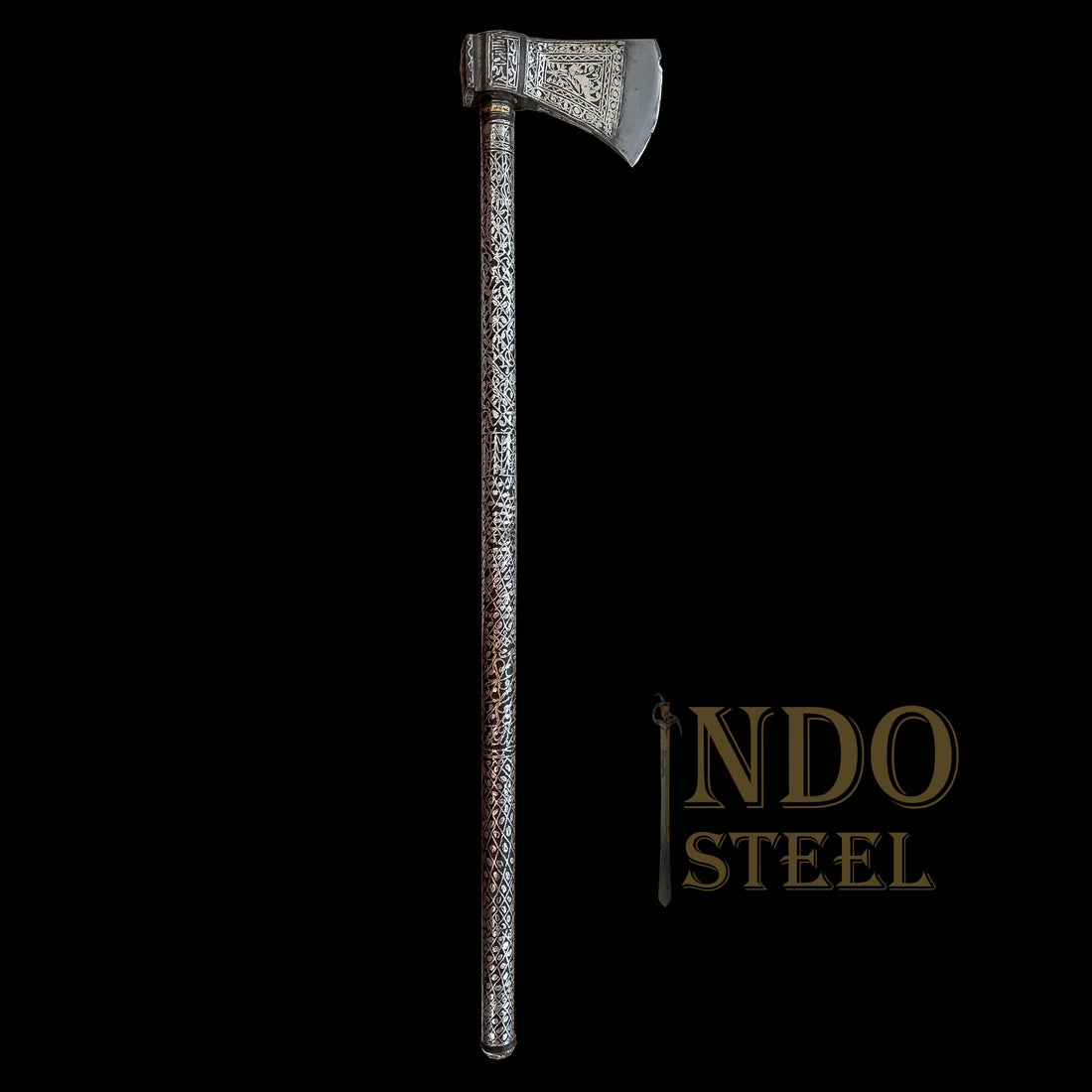
The Tabarzine

 The Tabarzine (( تبر زین) which literally translates to “saddle axe”) has ancient roots in the Indian subcontinent, with its use traced back to various dynasties and cultures. One of the most iconic weapons associated with Maratha cavalry was the saddle axe, known for its versatility in combat. According to T.R. Dholakia in the Maratha Military System, saddle axes were favoured for their effectiveness in close quarters fighting, allowing cavalrymen to engage enemies while mounted (Dholakia, 2004). The design of the saddle axe, with its broad blade, facilitated both slashing and chopping actions, making it an ideal weapon for swift attacks. Historical accounts, such as those found in the Sabhasad Bakhar, describe how Maratha warriors used saddle axes during ambushes and skirmishes, demonstrating their utility in the hit-and-run
The Tabarzine (( تبر زین) which literally translates to “saddle axe”) has ancient roots in the Indian subcontinent, with its use traced back to various dynasties and cultures. One of the most iconic weapons associated with Maratha cavalry was the saddle axe, known for its versatility in combat. According to T.R. Dholakia in the Maratha Military System, saddle axes were favoured for their effectiveness in close quarters fighting, allowing cavalrymen to engage enemies while mounted (Dholakia, 2004). The design of the saddle axe, with its broad blade, facilitated both slashing and chopping actions, making it an ideal weapon for swift attacks. Historical accounts, such as those found in the Sabhasad Bakhar, describe how Maratha warriors used saddle axes during ambushes and skirmishes, demonstrating their utility in the hit-and-run
tactics that characterized Maratha warfare (Sabhasad Bakhar,17th century).
The use of the tabar in warfare is documented in several historical texts. For instance, the *Ain-i-Akbari*, a Persian text written by Abu’l-Fazl ibn Mubarak during the reign of Mughal Emperor Akbar, describes the equipment and arms used by cavalry units, including the tabar. This source highlights the weapon’s significance in the military strategies of one of India’s most formidable empires.
The images depict a late 18th-century crafted tabarzine, likely from the Deccan region in India, with a Deccani lion on both sides. The lion is surrounded by an ornate design, based on the Asiatic lion, which once roamed across the Indian subcontinent. The tabarzine’s head is made from wootz steel, while the haft is forged from a more modest steel, elegantly adorned with intricate silver floral patterns.
References
Dholakia, T.R. Maratha Military System. New Delhi: Manohar Publishers, 2004.
Sabhasad Bakhar. 17th century.
Abu’l-Fazl ibn Mubarak. *Ain-i-Akbari*. Translated by H. S. Shukla
